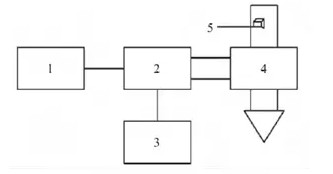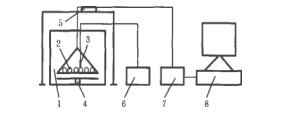
- Shandong Microwave Machinery Co.,Ltd.
- To be the Leader of microwave drying and edible oil refining equipments Manufacturer
Home> Company News> Effects of microwave drying on nutrition and quality characteristics of millet and Chinese yam
- AddressNo. 225, Huangqiao Village, Beiyuan, Tianqiao District, Jinan, Shandong, China
- Factory AddressNo. 225, Huangqiao Village, Beiyuan, Tianqiao District, Jinan, Shandong, China
- Phone(Working Time)+86 0531 85064681
- Phone(Nonworking Time)0086-15020017267
- Fax+ 86 0531 85064682
Effects of microwave drying on nutrition and quality characteristics of millet and Chinese yam
2018-11-15 13:28:24

Absrtact: Millet and yam were selected as main raw materials to study the effects of temperature and loading capacity of microwave drying equipment on drying rate, chroma, rehydration ratio and content of functional components. The results showed that the drying rate of millet and yam was higher and the rehydration ratio was suitable when the drying temperature was 50 C, 5.70 g/mL and 5.30 g/mL respectively; the chroma was better, and the_was 12.36 and 11.39 respectively; when the loading capacity was 300 g, the drying rate of millet and yam was higher, and the rehydration ratio was suitable, which was 3.32 and 2.93 g/mL respectively; the chroma was better, and_was 11.39. Was 13.48 and 12.41 respectively, and the loss of carotene and polysaccharide in millet was less, 0.052 and 0.59 mg/100g respectively.
Key words: microwave drying millet; yam; nutrition and quality characteristics
Microwave drying has the characteristics of high efficiency, high speed and low temperature. It can retain the inherent color, aroma, taste and nutritional elements of food, and the product has good structure and rehydration. Millet is a traditional miscellaneous grain in China. It is the seed of cereal millet, a grass plant of the genus Cyperus. It is rich in nutrients and has high digestion and absorption rate. The contents of carotene, vitamin, calcium, magnesium, iron and phosphorus in Millet are higher than those in other cereals. It is a good dietary food.
However, China's millet intensive processing technology is still in a weak link. From the current consumption habits, the existing millet products can not meet the diversified needs of the market, which puts forward new requirements for millet processing. Dioscorea opposita is rich in protein, vitamins, trace elements and mucopolysaccharides. It is a food with high nutritional value and is also a traditional Chinese medicine and food homology.
However, owing to its unique viscous substances, excessive moisture content and irregular individual shape, Dioscorea opposita has the problems of short storage time and unable to withstand long-distance transportation. The deep processing of Chinese yam can not only solve the above problems, but also increase the added value of products.
The effects of microwave drying temperature and loading capacity on the quality of millet and yam were studied in this paper. The loss of thermosensitive functional components in traditional drying process was reduced, which provided theoretical basis and technical support for the industrialized production of millet and yam in low temperature preservation and drying.
 High efficiency food beverage factory stone paper production line
High efficiency food beverage factory stone paper production line Factory price Fully automatic Machine PP/PS Plastic Sheet Production Line
Factory price Fully automatic Machine PP/PS Plastic Sheet Production Line used deformered bar rolling mill production line
used deformered bar rolling mill production line Manufacturing plant automatic factory puffed sticky rice cracker production line
Manufacturing plant automatic factory puffed sticky rice cracker production line Production Line Pp Ppr Plastic Pipe Making Machine 20-63mm Multi-layer Extrusion Production Line For Water Supply
Production Line Pp Ppr Plastic Pipe Making Machine 20-63mm Multi-layer Extrusion Production Line For Water Supply